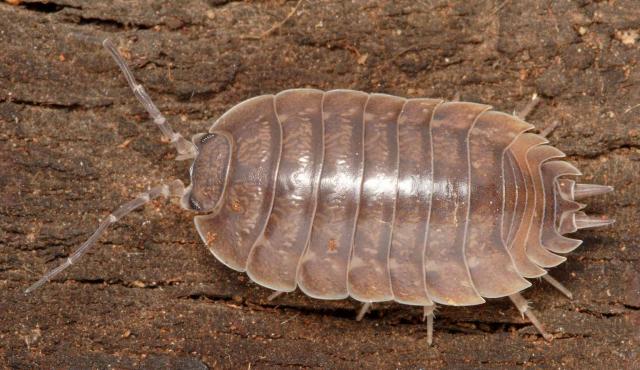A range of teacher professional learning programs will be developed to accompany the Biodiversity of the Western Volcanic Plains online outreach...

Smooth Slater
Porcellio laevis
Slaters hide in moist places, away from the drying effect of the sun. The small limbs underneath the segments at the slater's tail end act as 'lungs'.
| Details | Description |
| Type | Invertebrate |
| Group | Crustacean |
| Identifying Characteristics | |
| Distinctive Markings | Dull grey oval shape body, rolls into a ball when disturbed. |
| Diet | Omnivore. Feeds on decaying vegetation, fungi and animal matter. |
| Habitat | Lives in moist areas including under rocks, logs and leaf litter in forested areas, and under pots and in compost heaps in gardens. |
| Native Status | Introduced |
| Taxonomy | |
| Phylum | Crustacea |
| Class | Malacostraca |
| Order | Isopoda |
| Family | Porcellionidae |
| Genus | Porcellio |
| Species | laevis |

Distribution maps indicate current and historic locations where species have been sighted.
Source: Atlas of Living Australia
| Conservation Status | |
| DEPI Advisory List | Not listed |
| FFG Act | Not listed |
| EPBC Act | Not listed |
The conservation status of species is listed within Victoria and Australia.
The Department of Environment and Primary Industry (DEPI) Advisory List consists of non-statutory advisory lists of rare or threatened flora and fauna within Victoria.
The Flora and Fauna Guarantee Act 1988 (FFG Act) lists threatened species in Victoria. Under the Act, an Action Statement is produced for each listed species.
The Environment Protection and Biodiversity Conservation Act 1999 (EPBC Act) is the Australian Government’s key piece of environmental legislation, listing nationally threatened native species and ecological communities.



